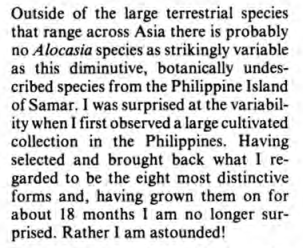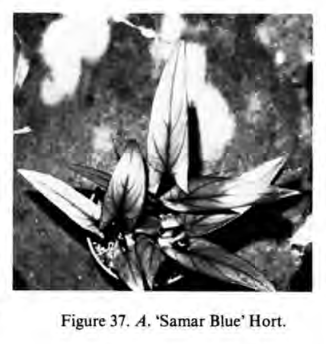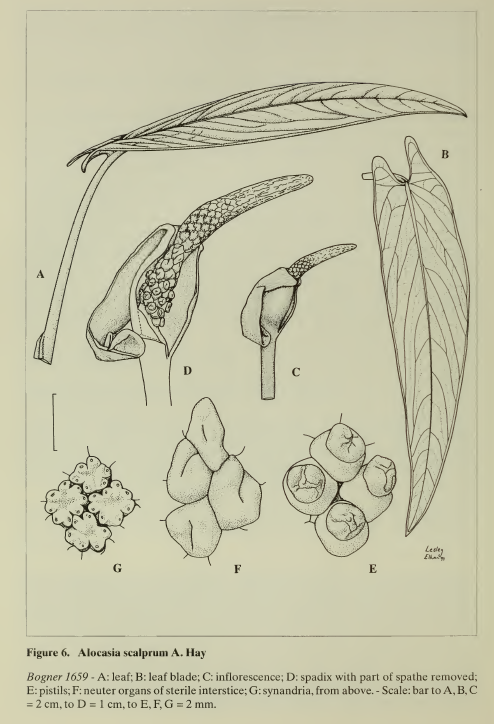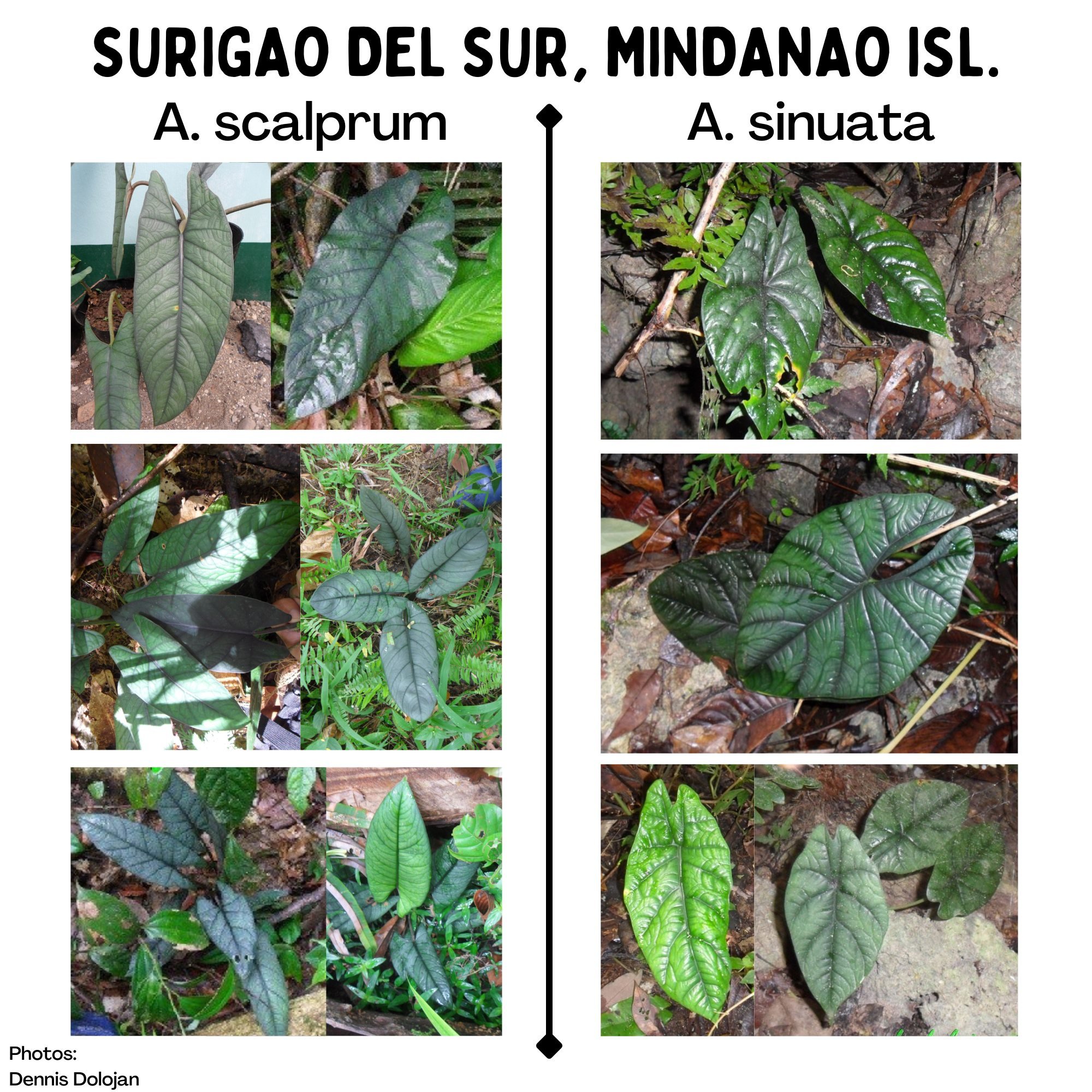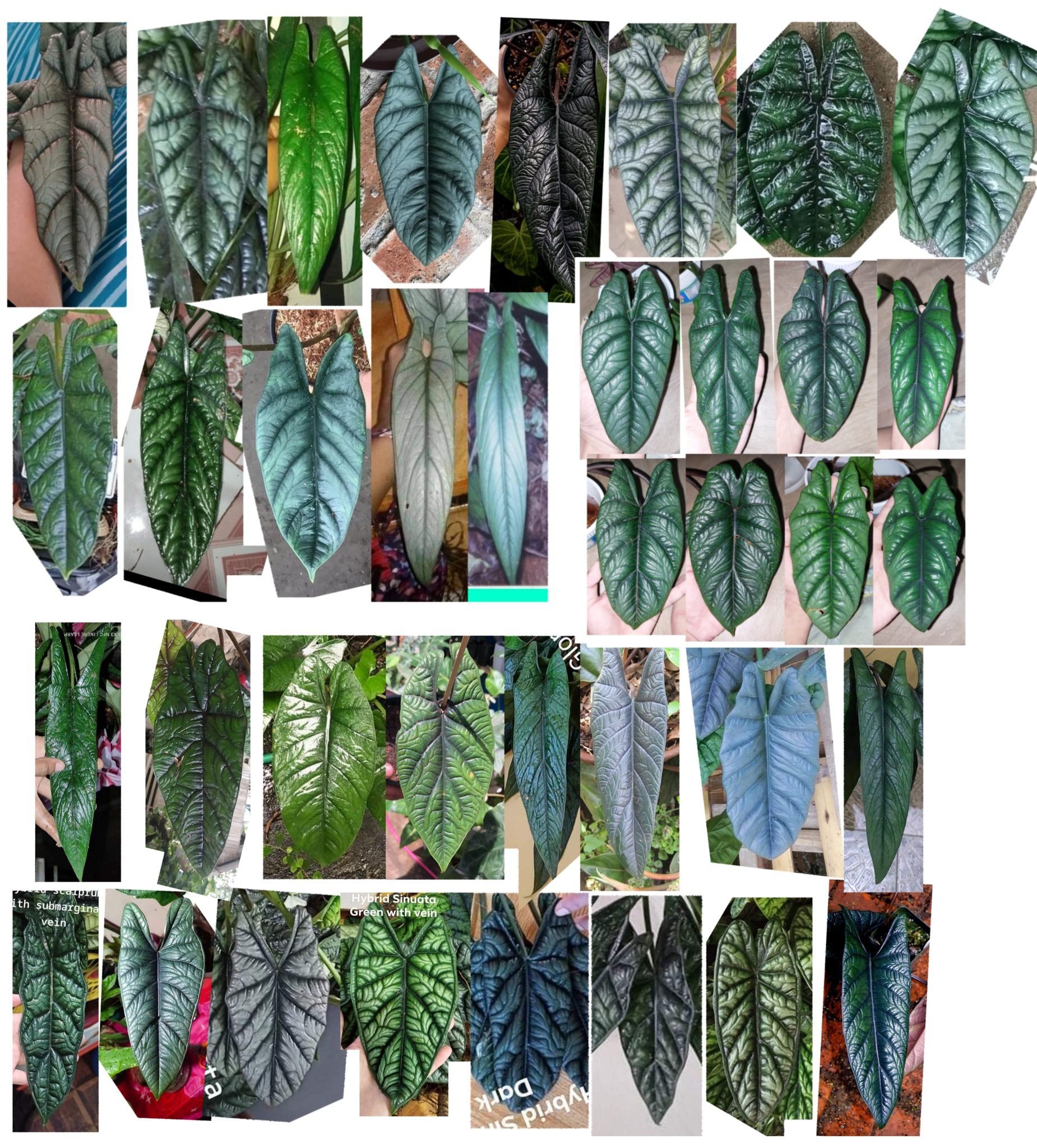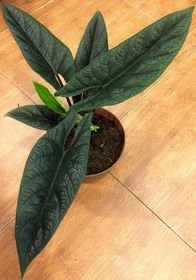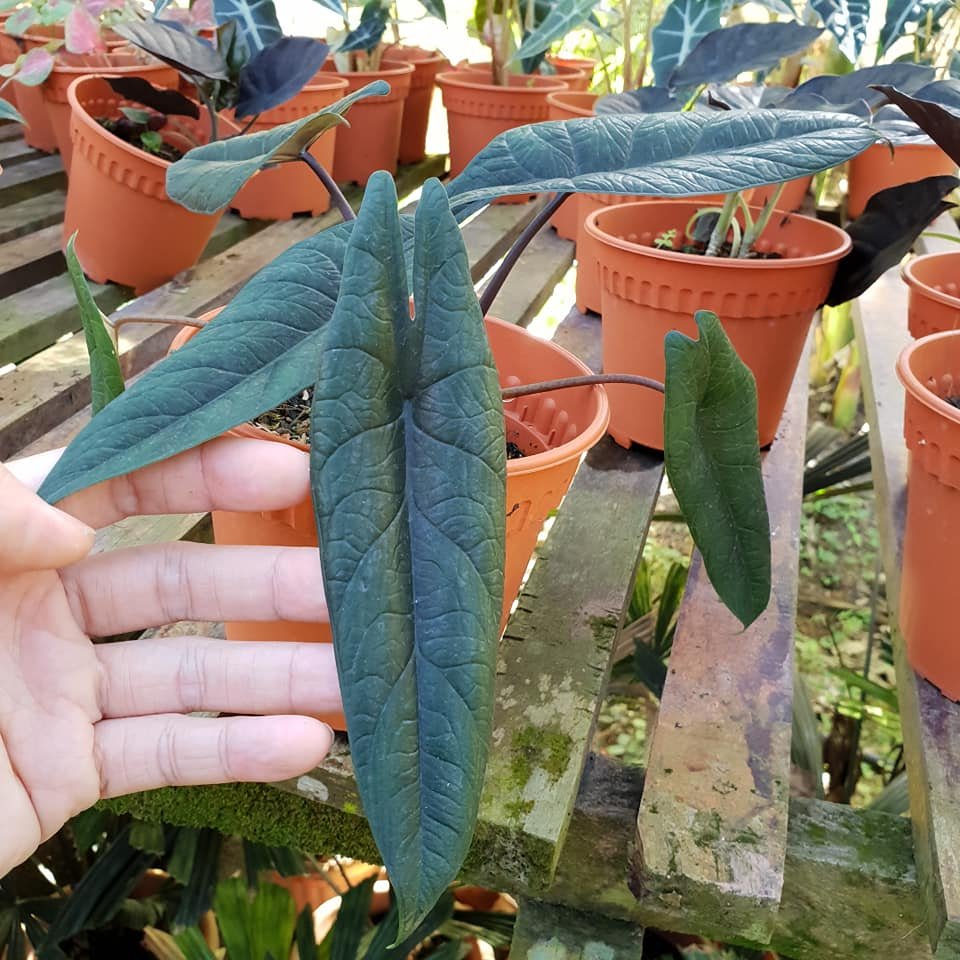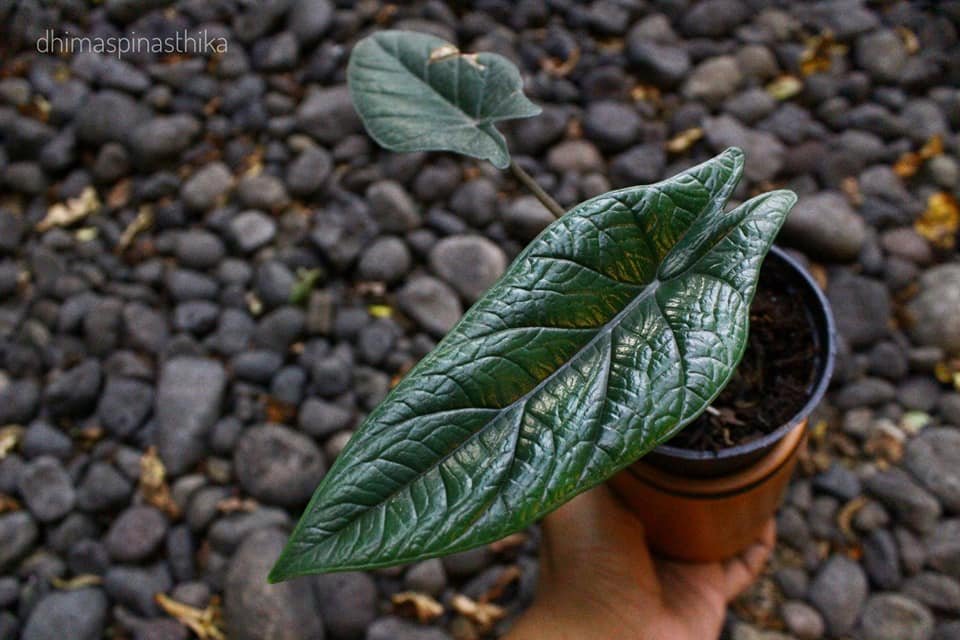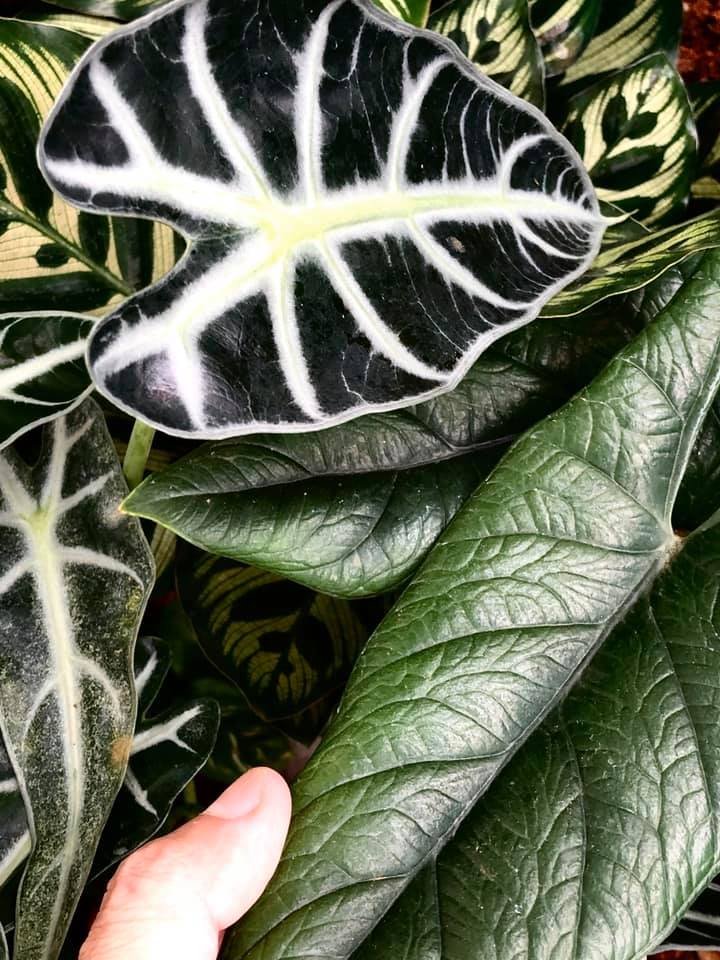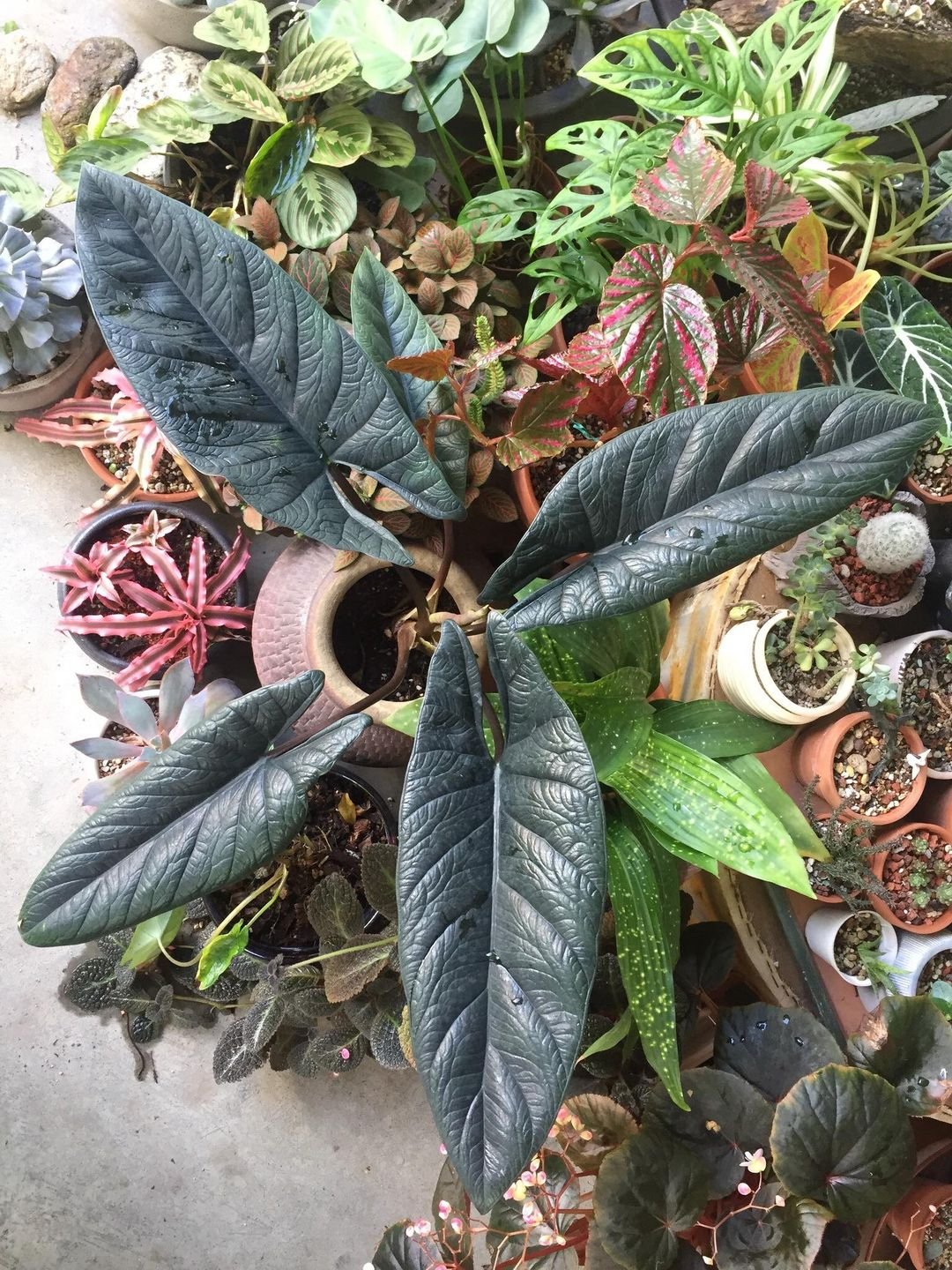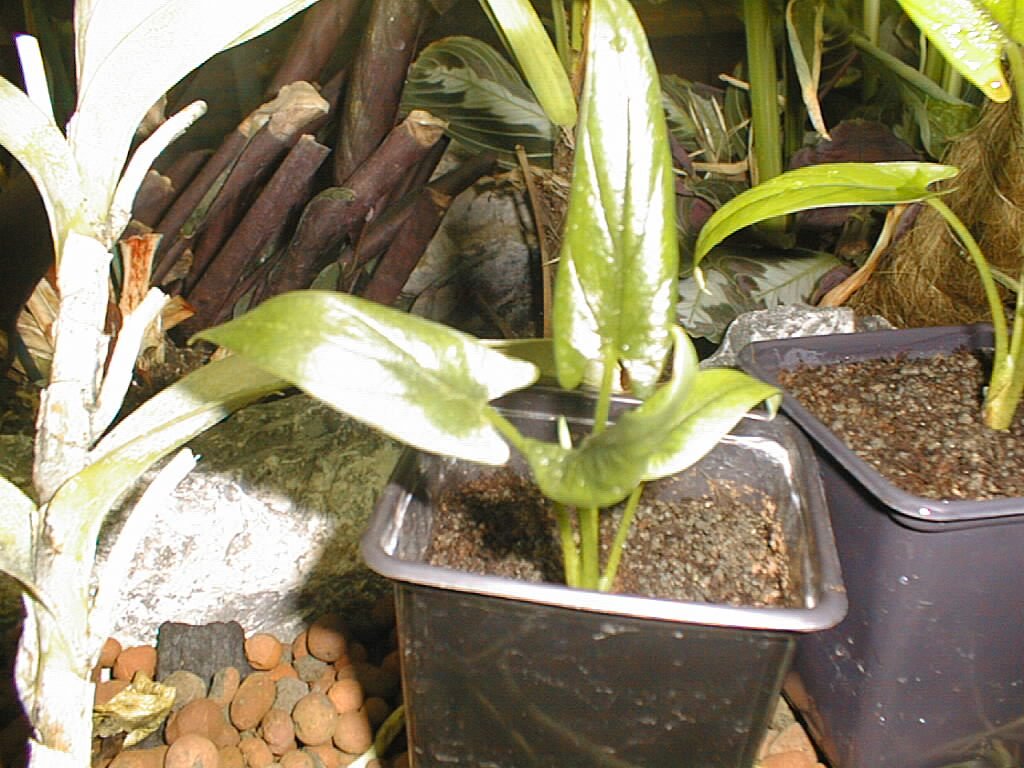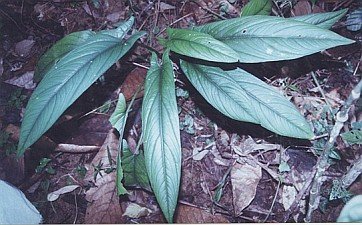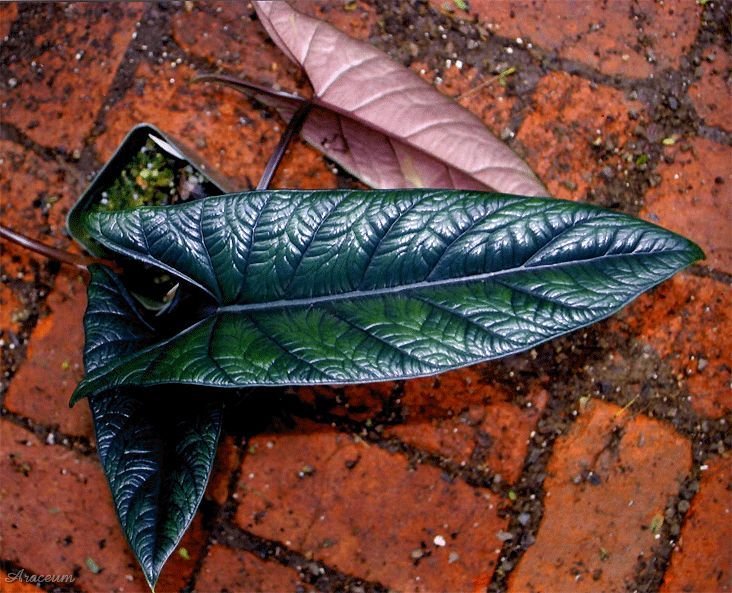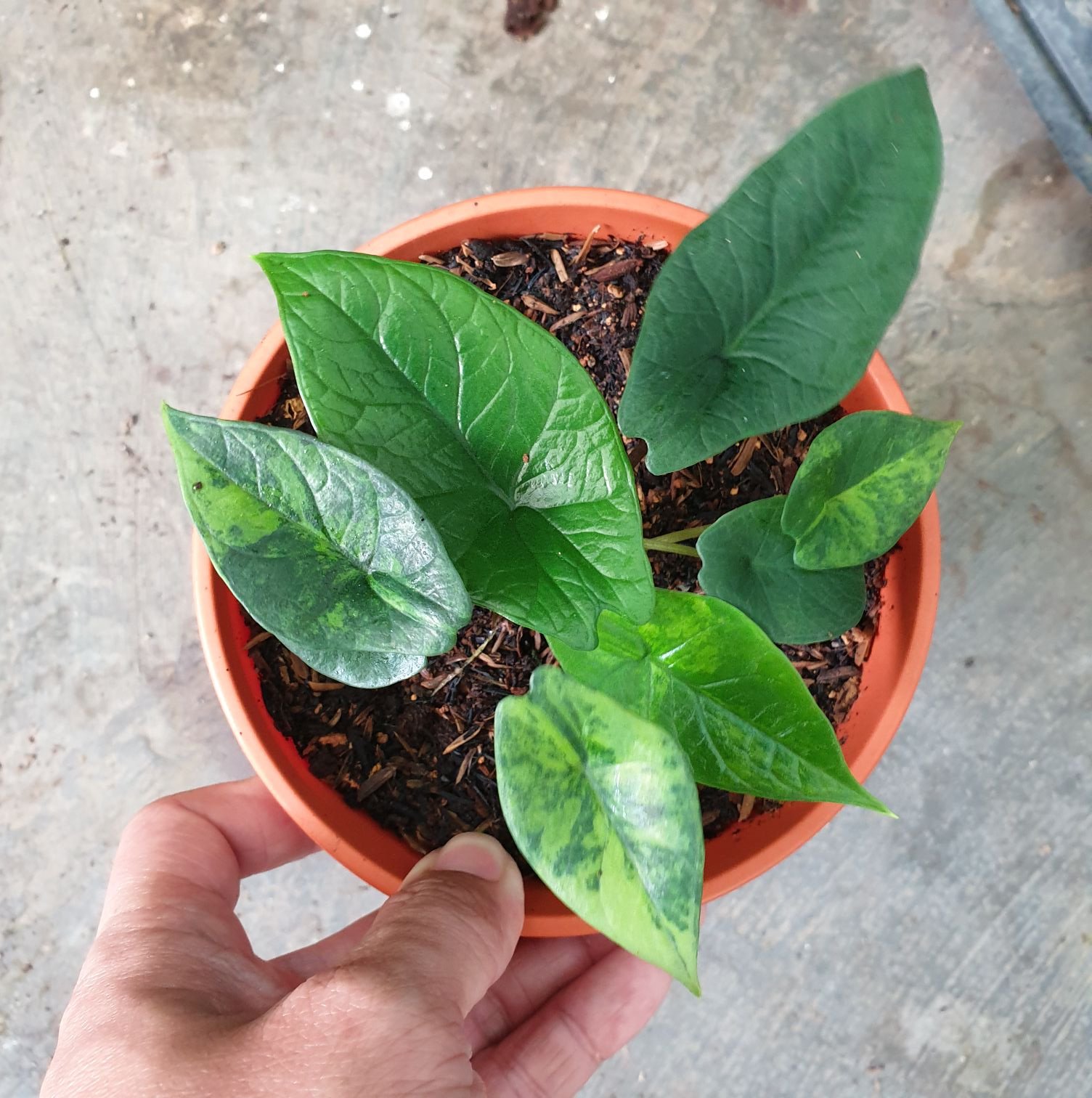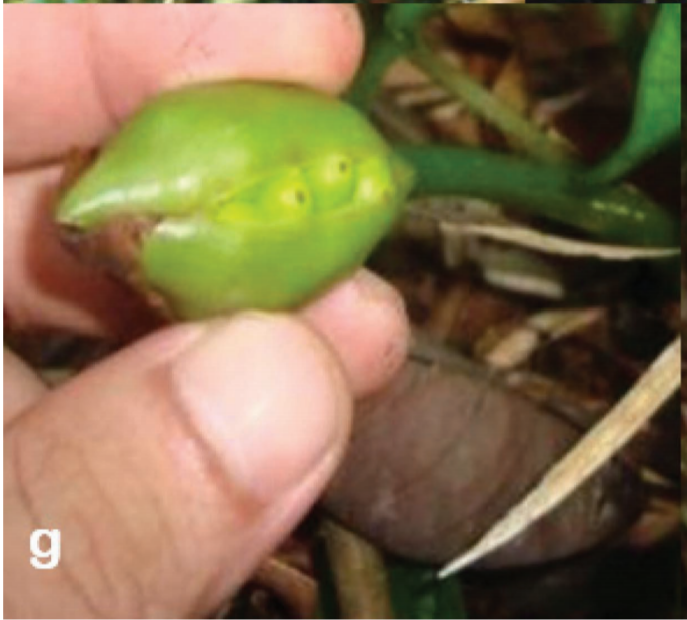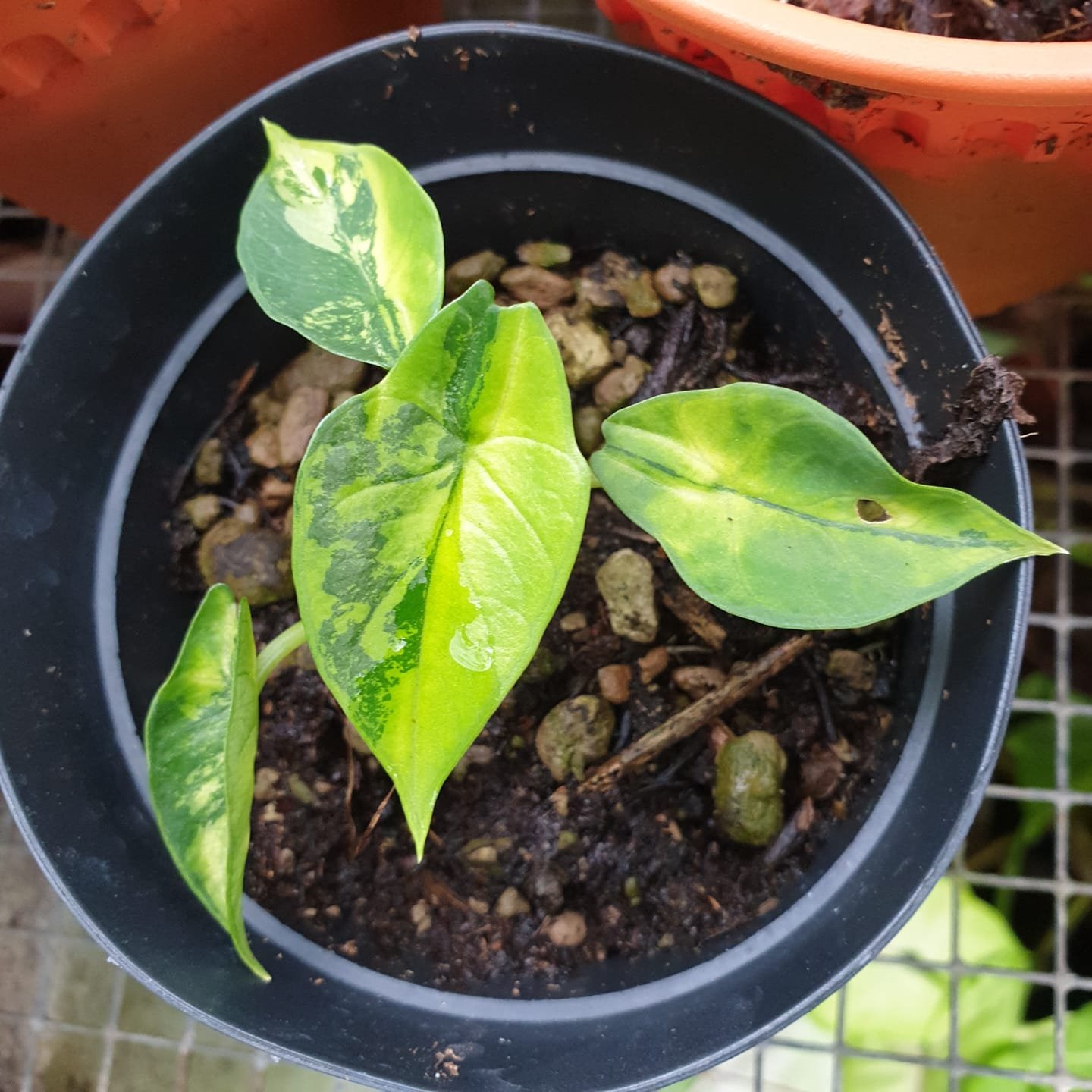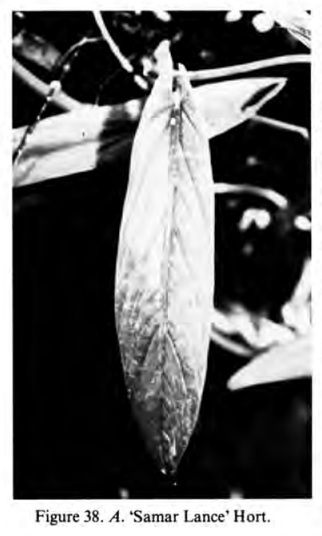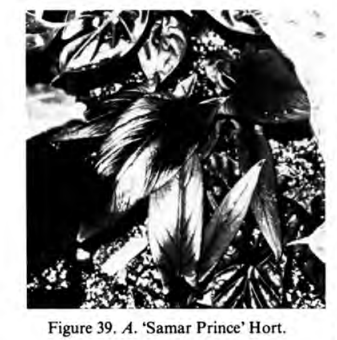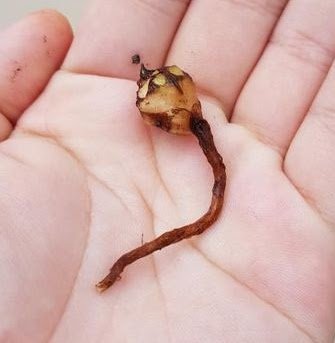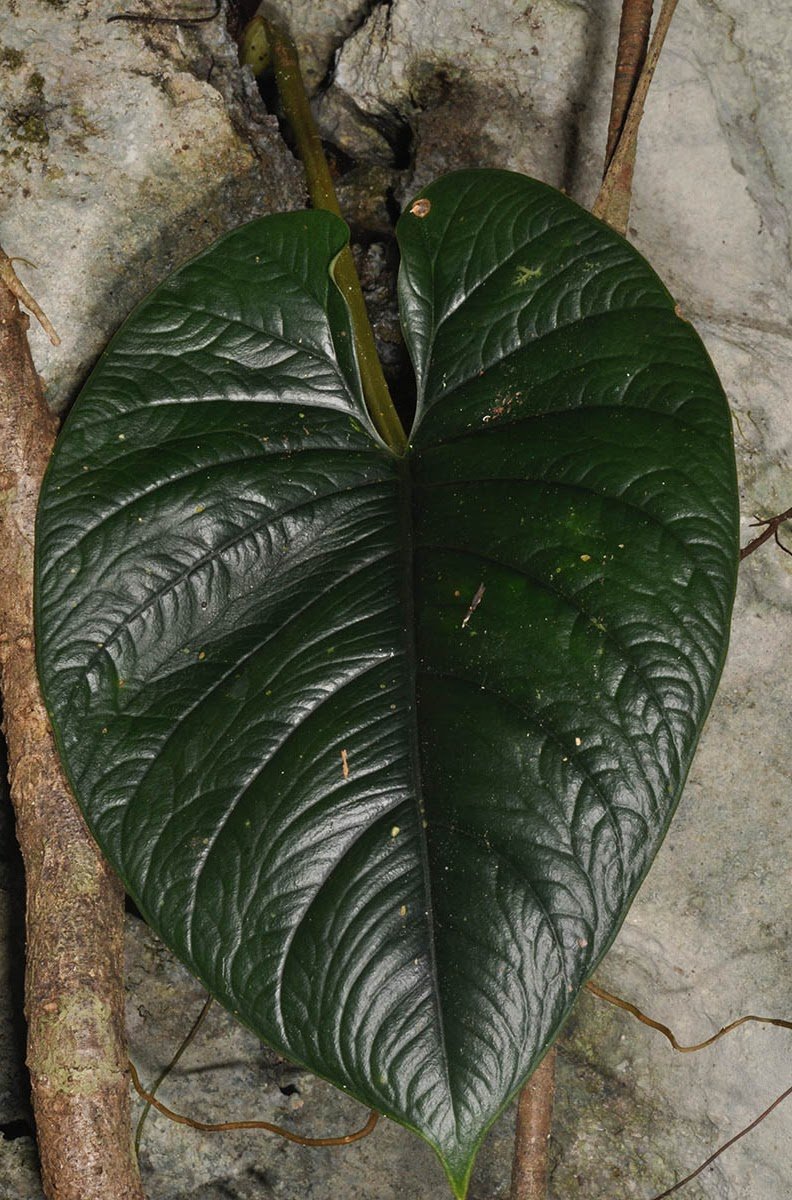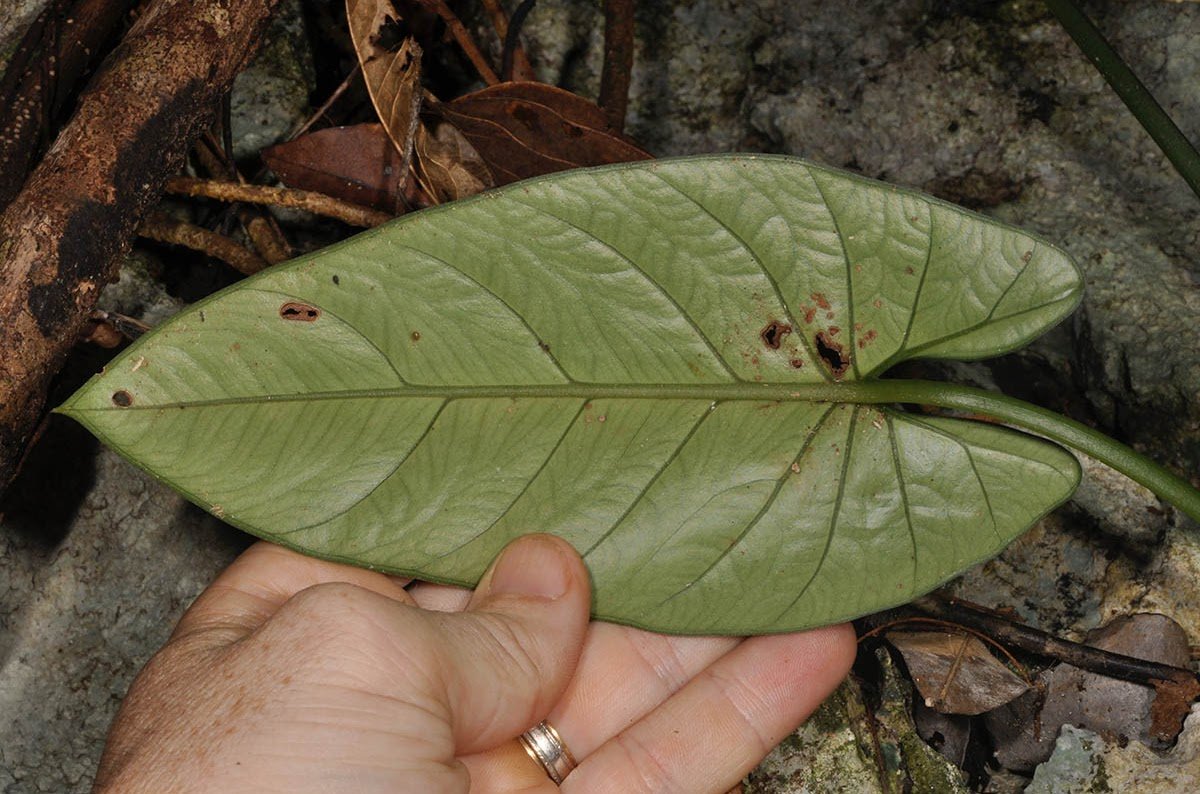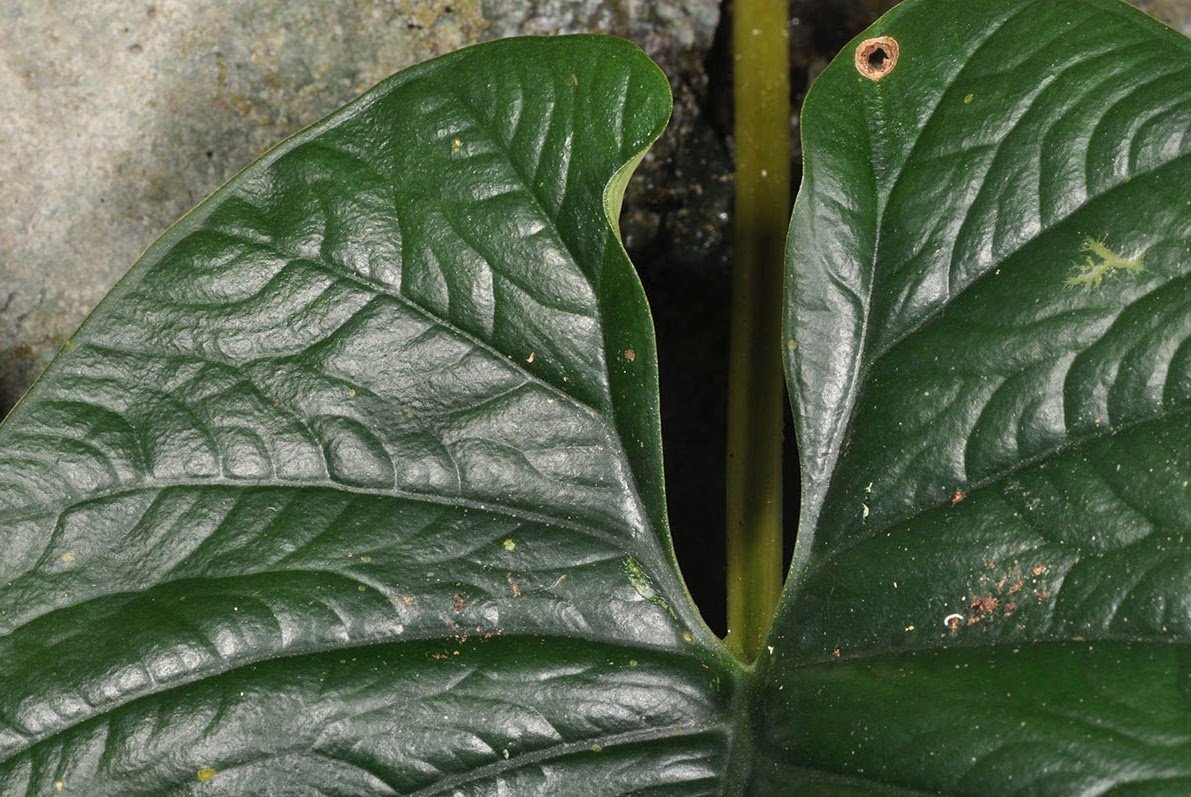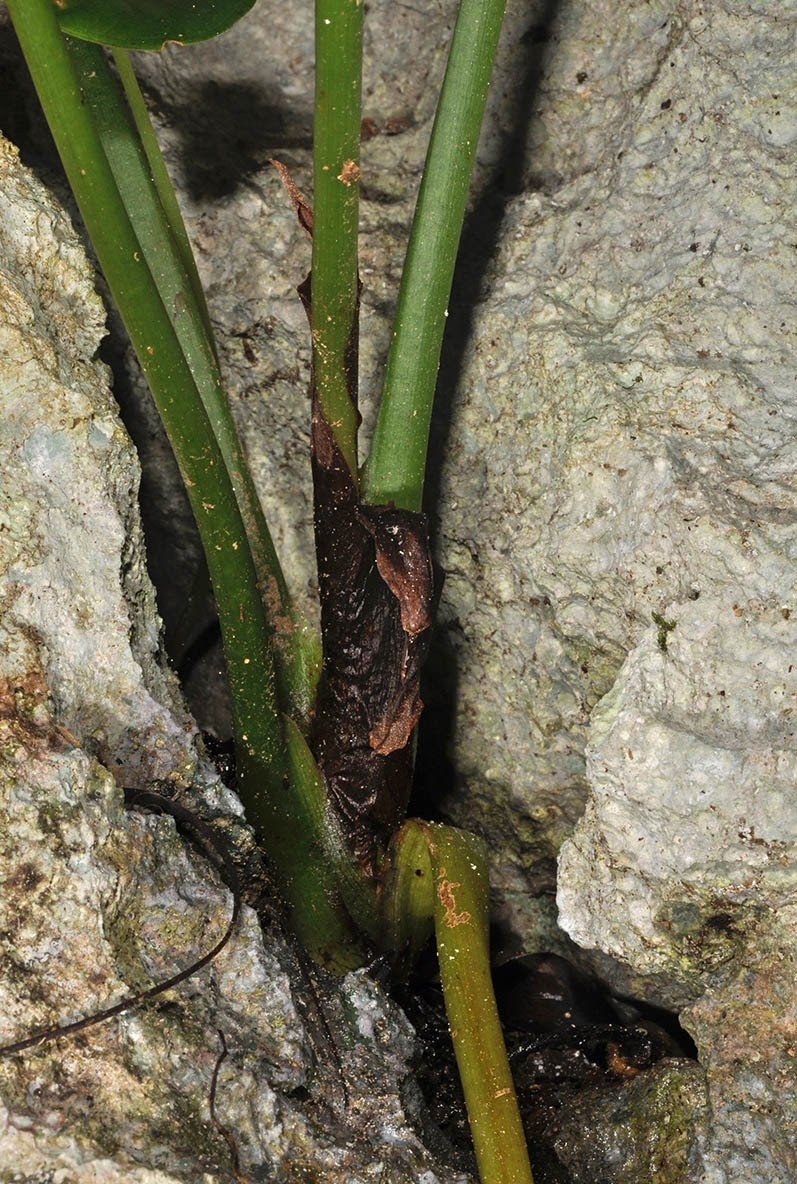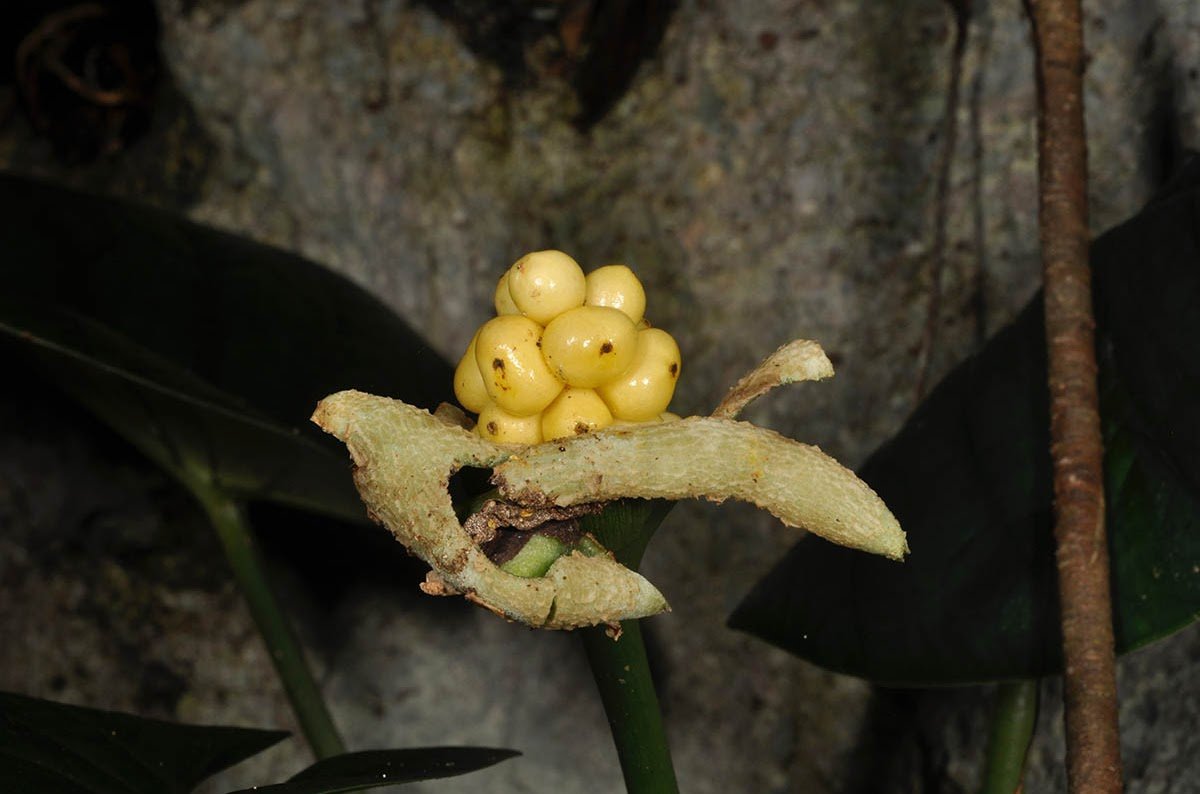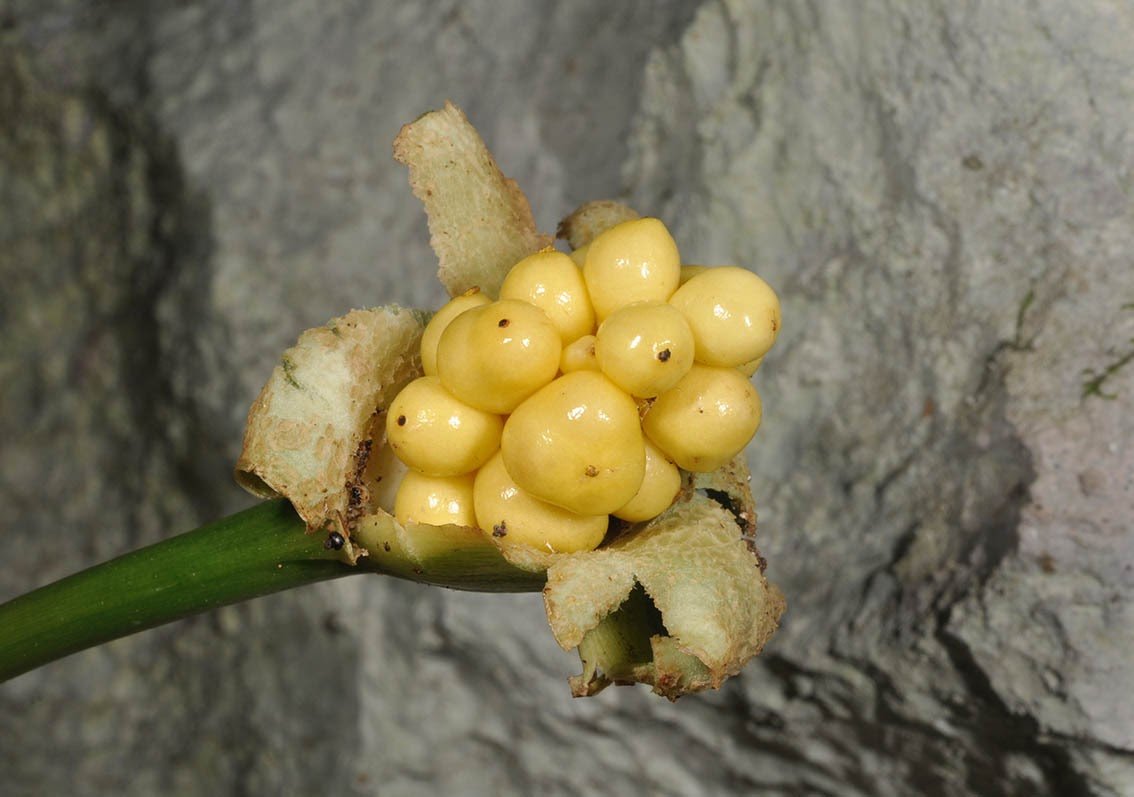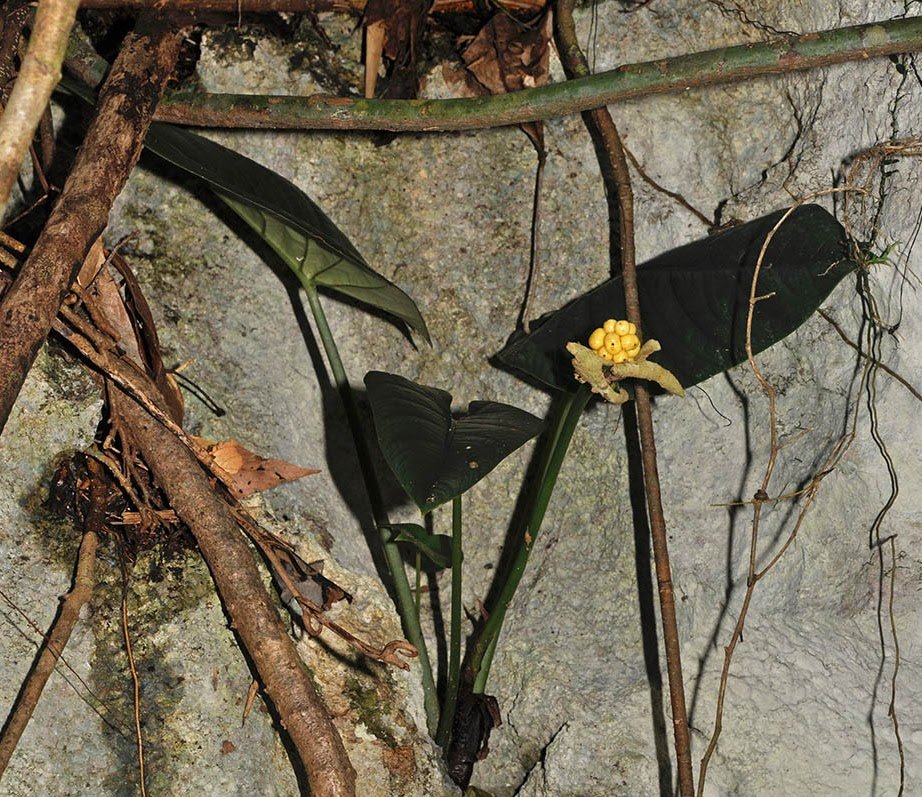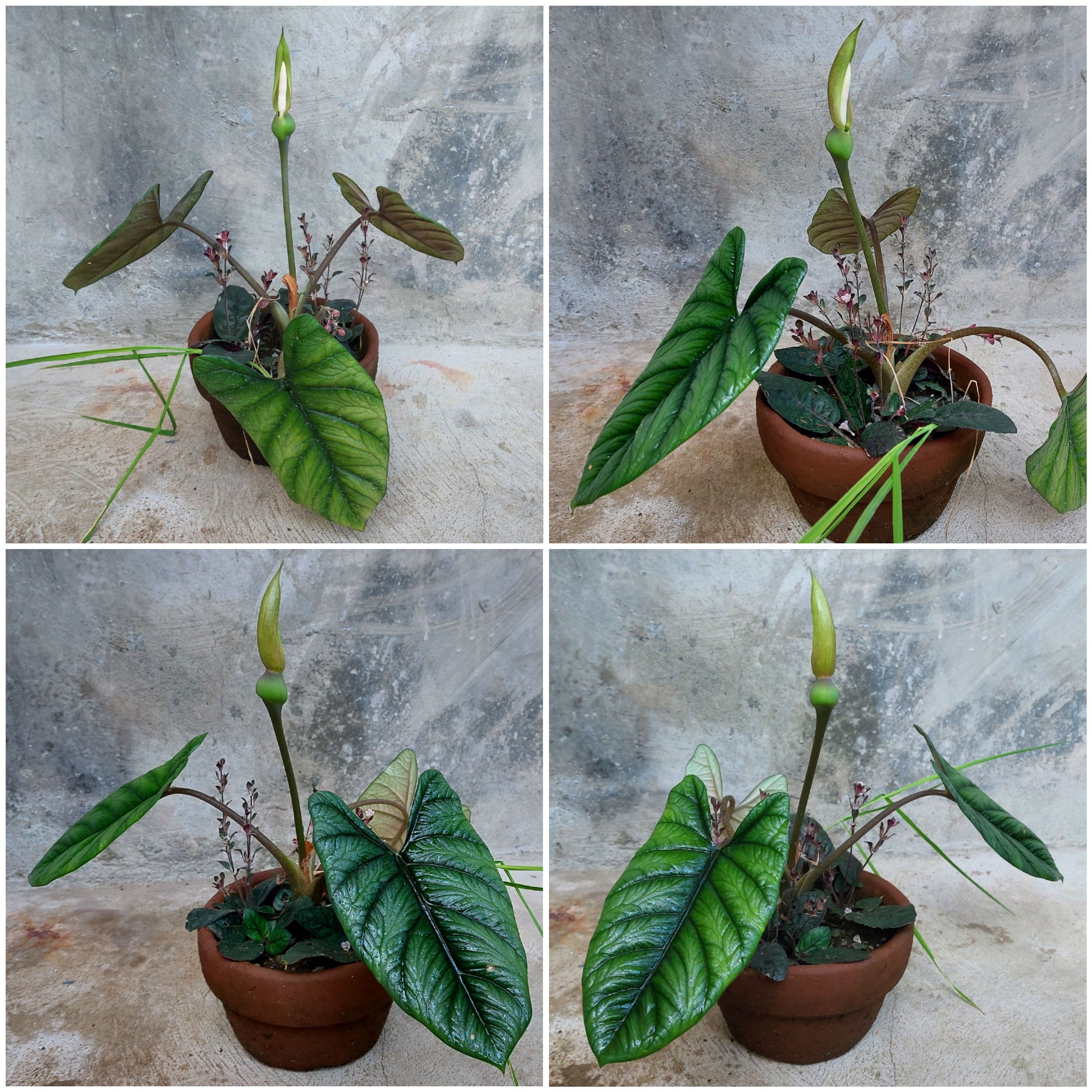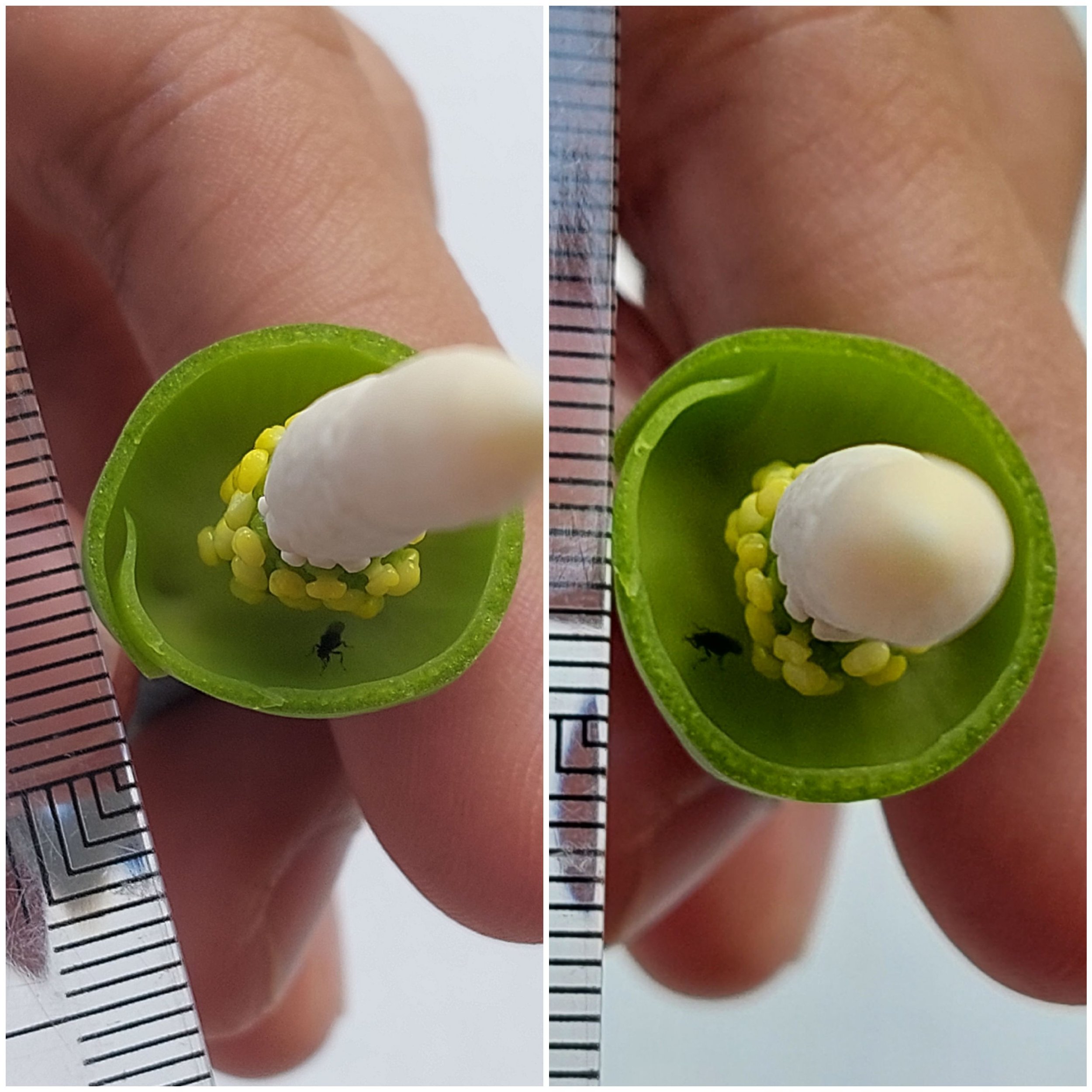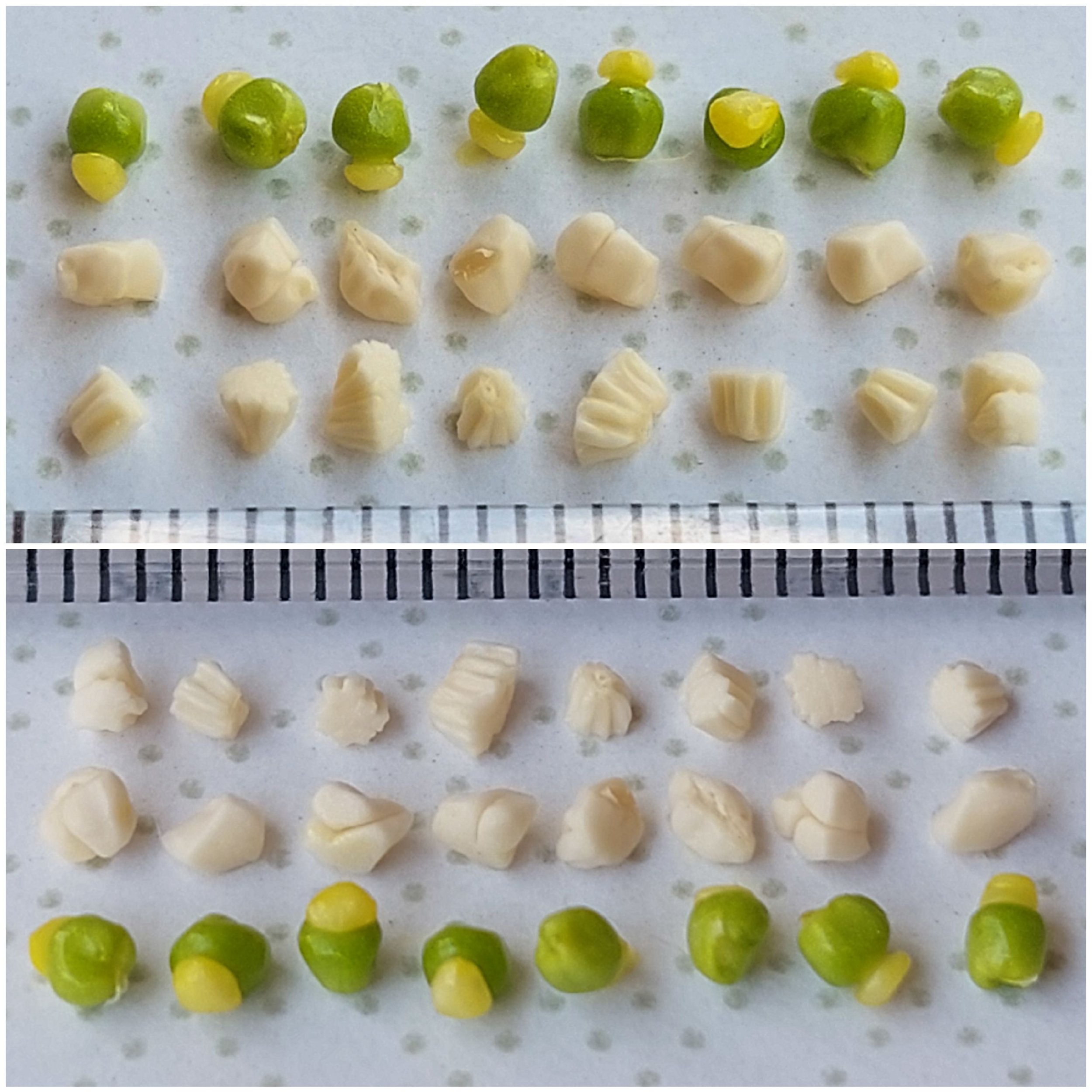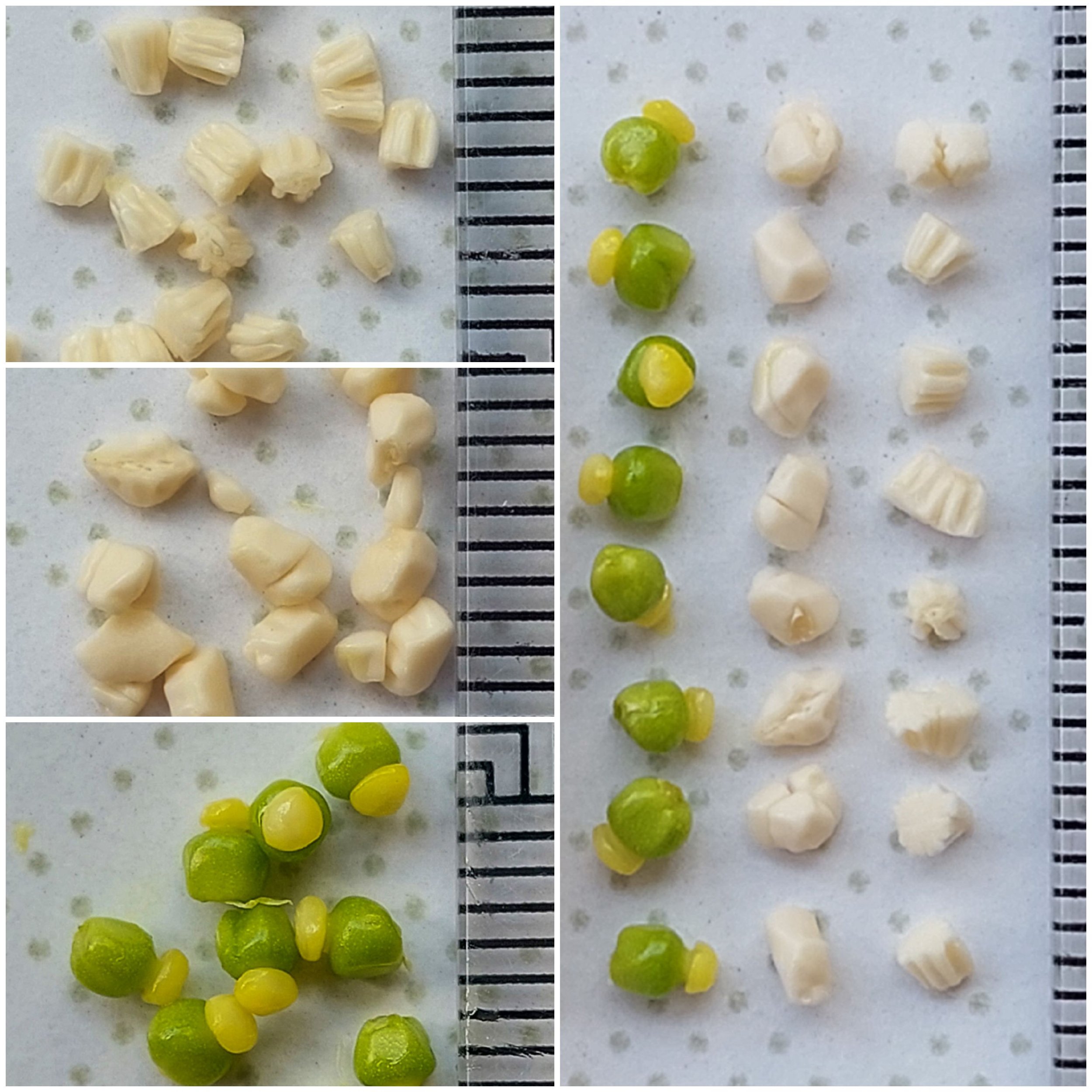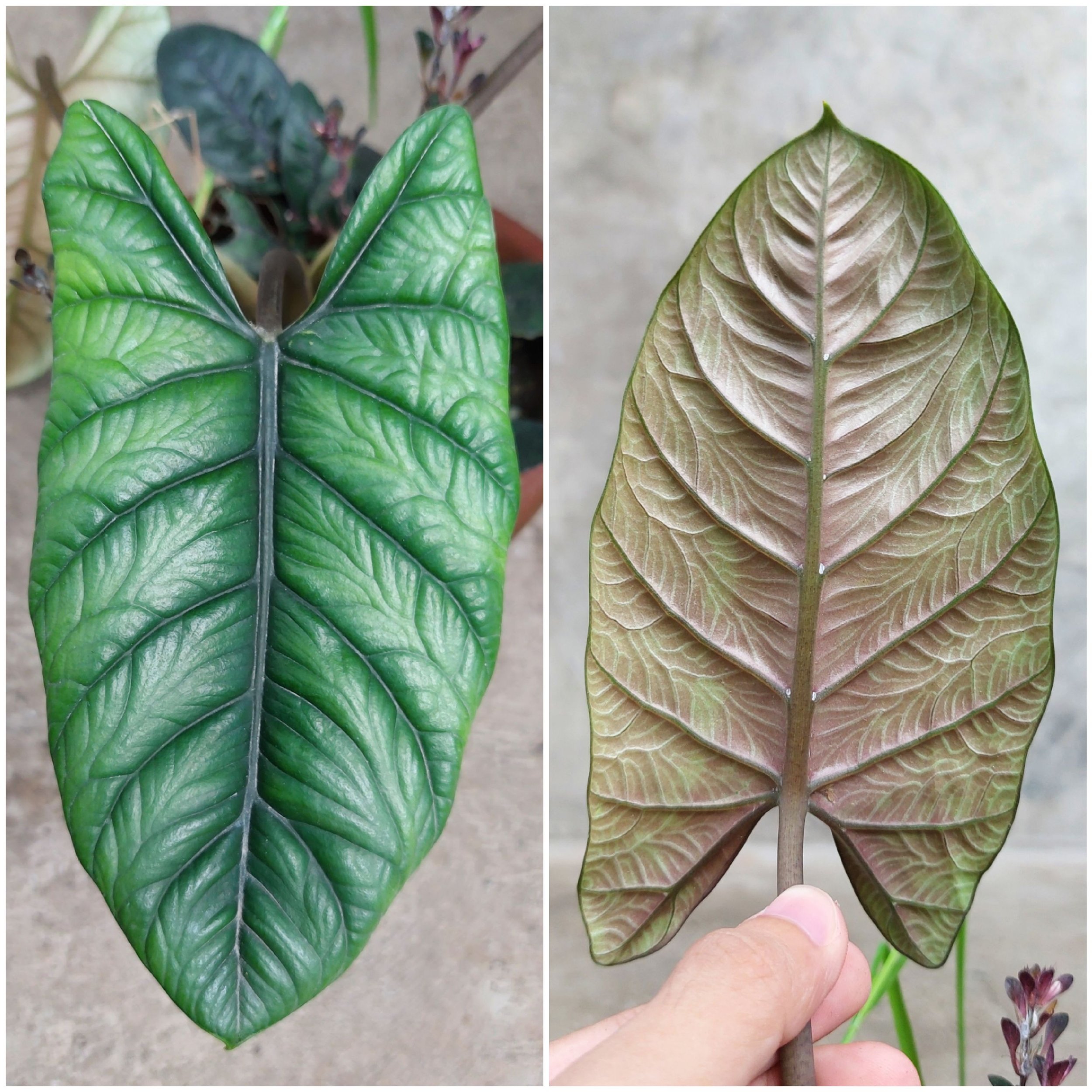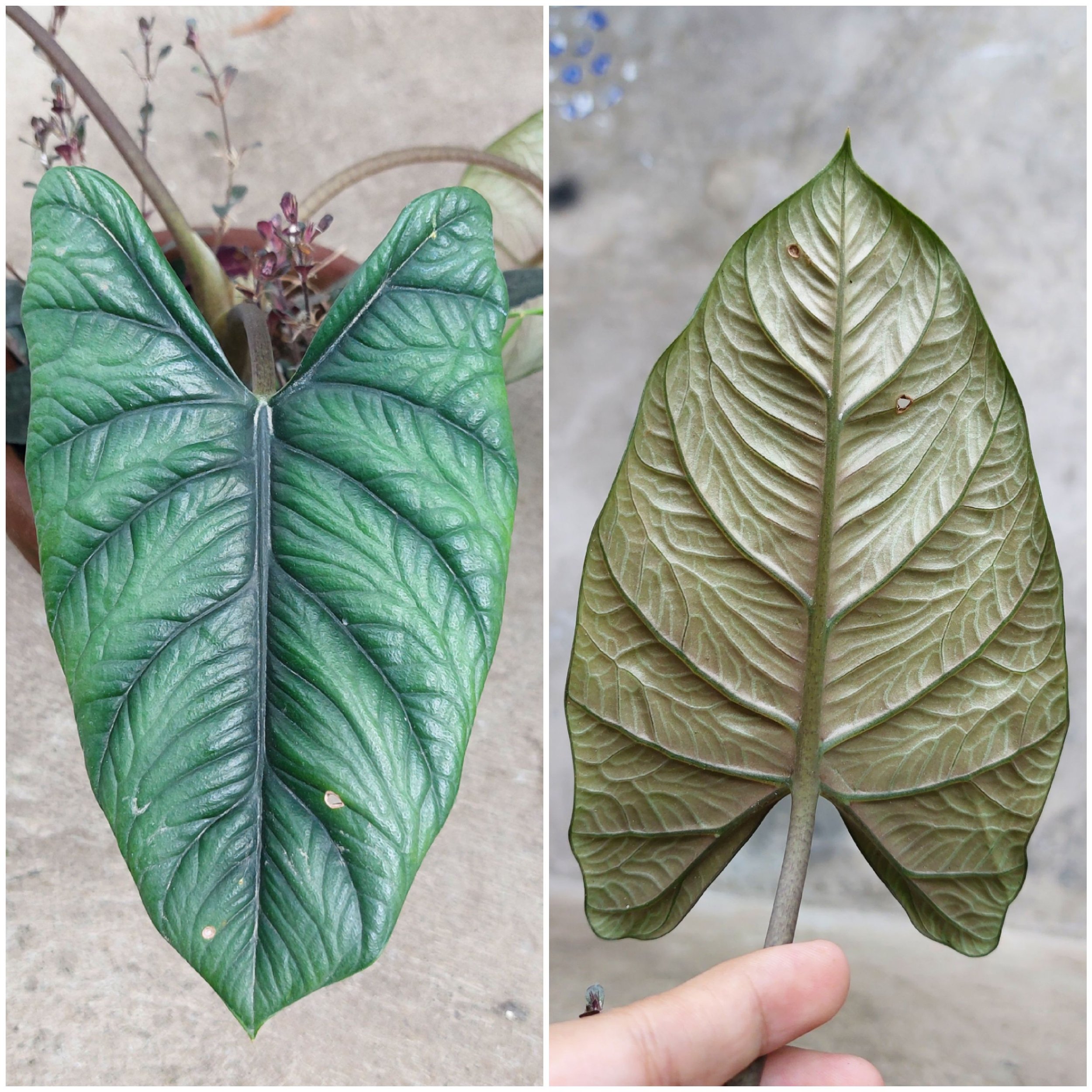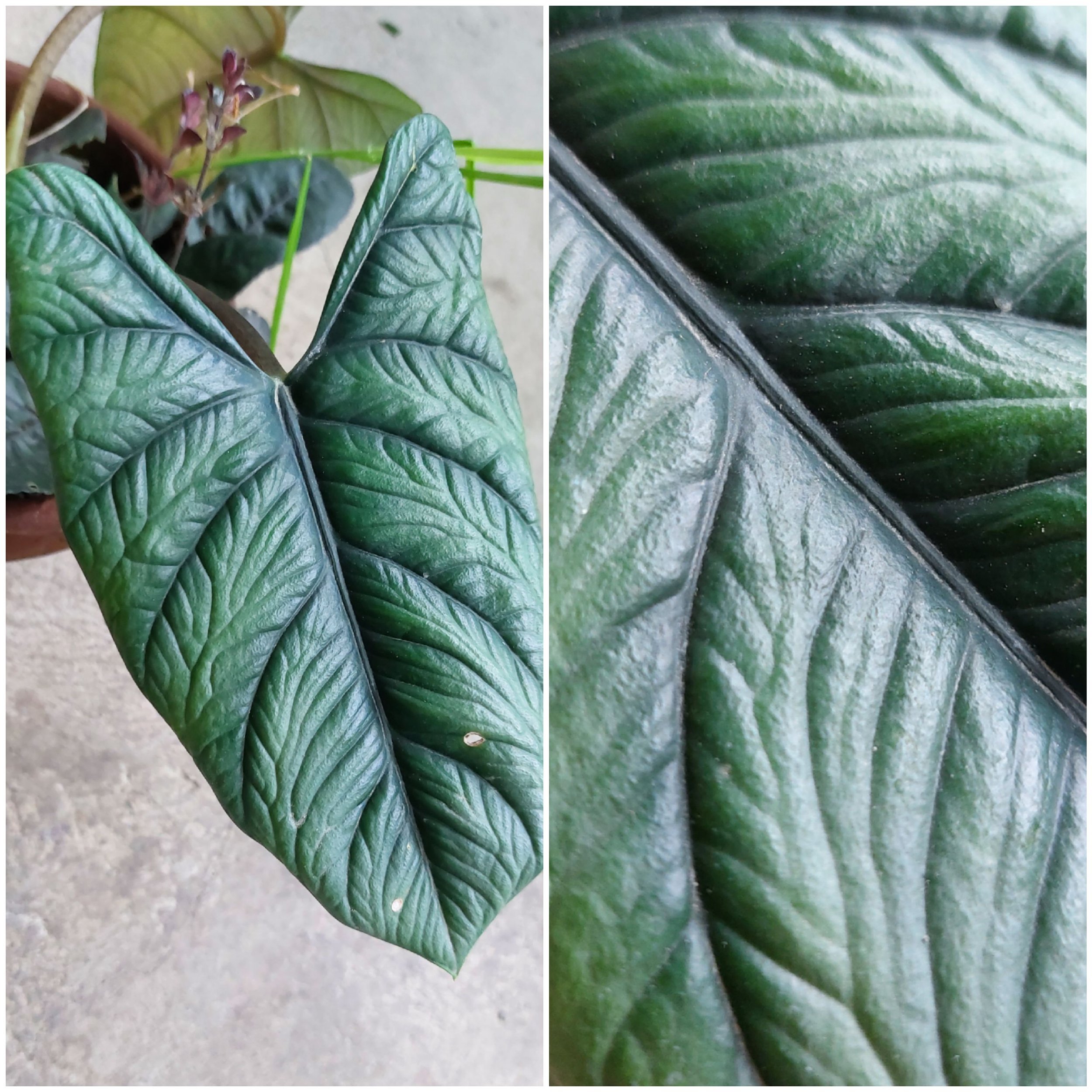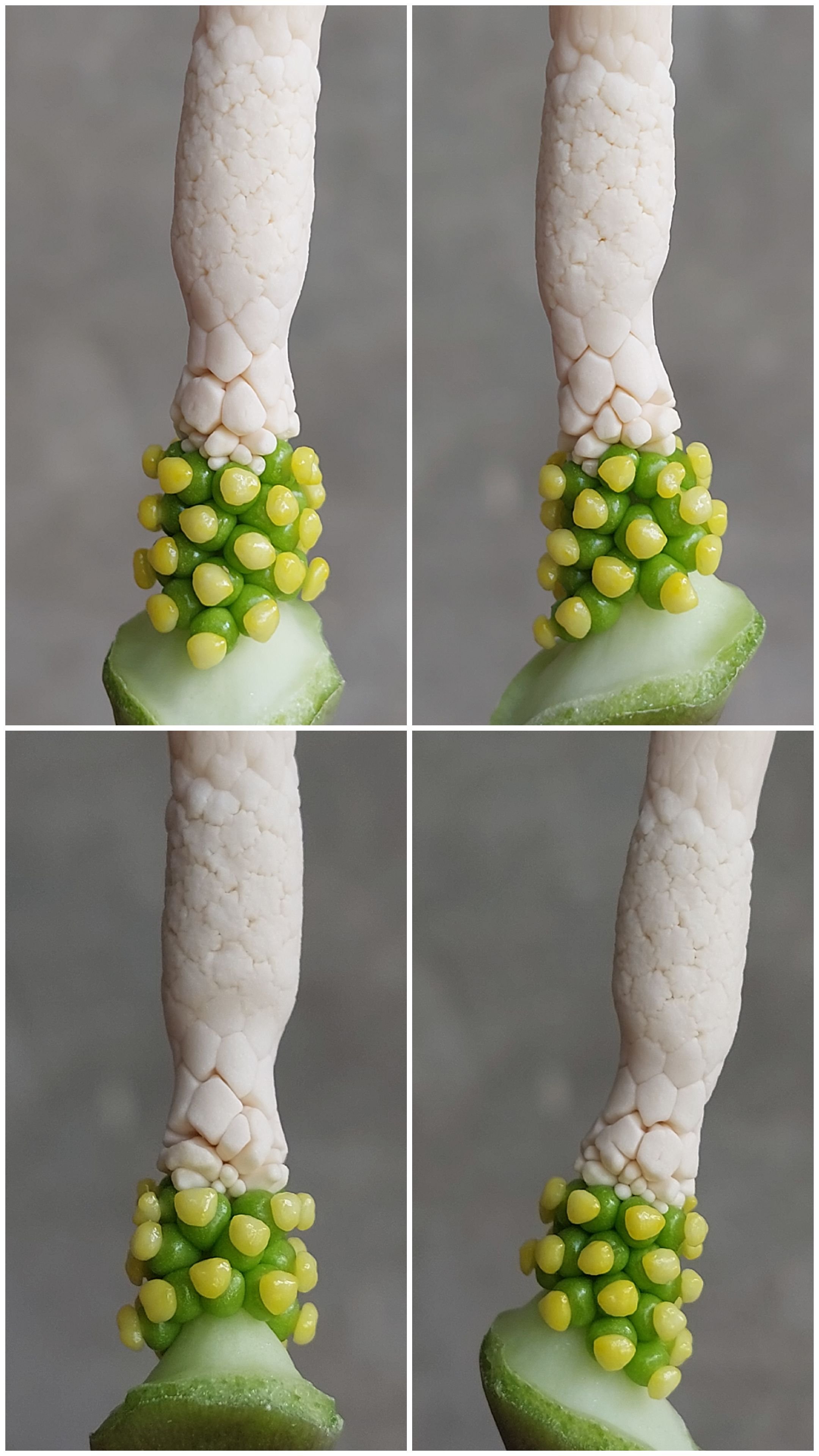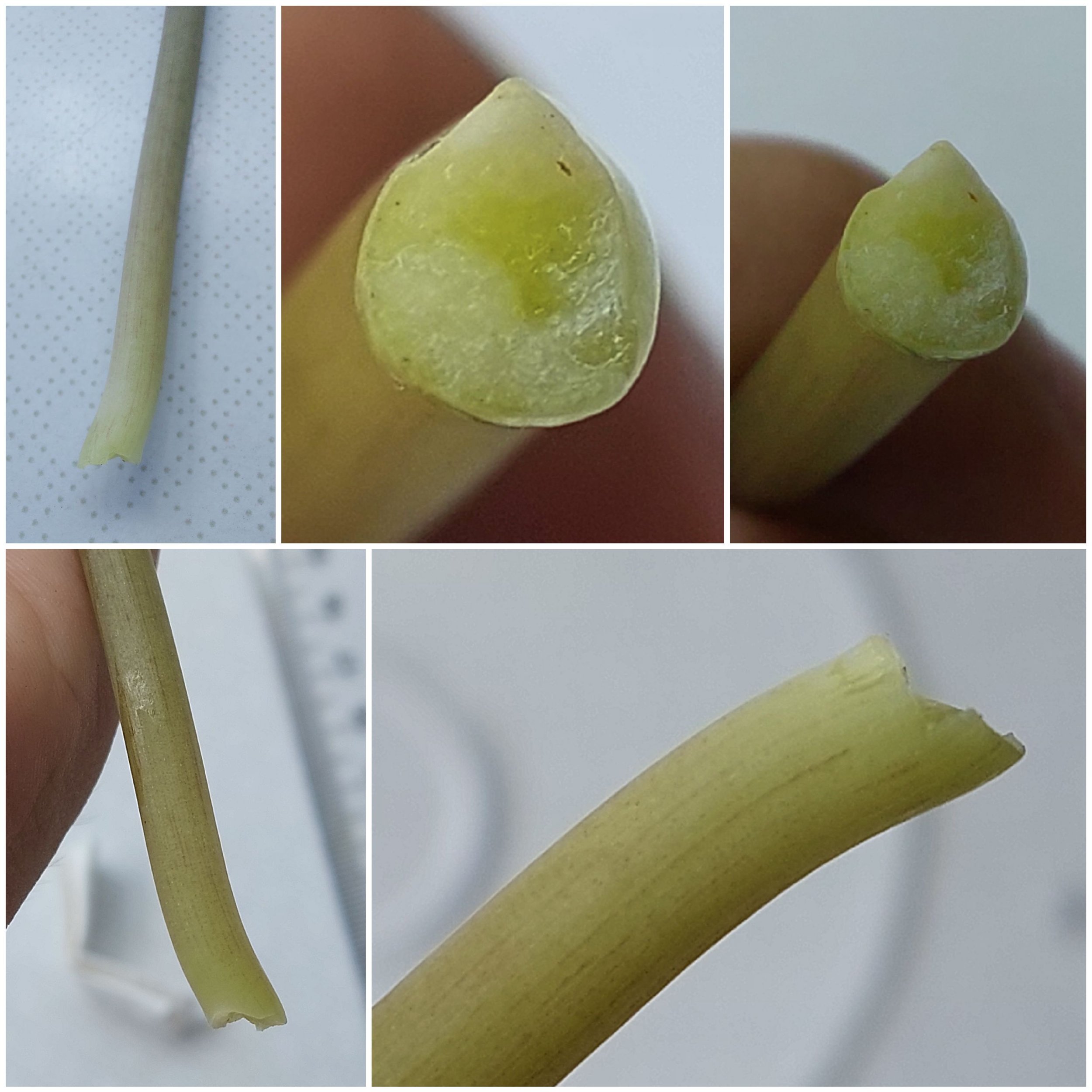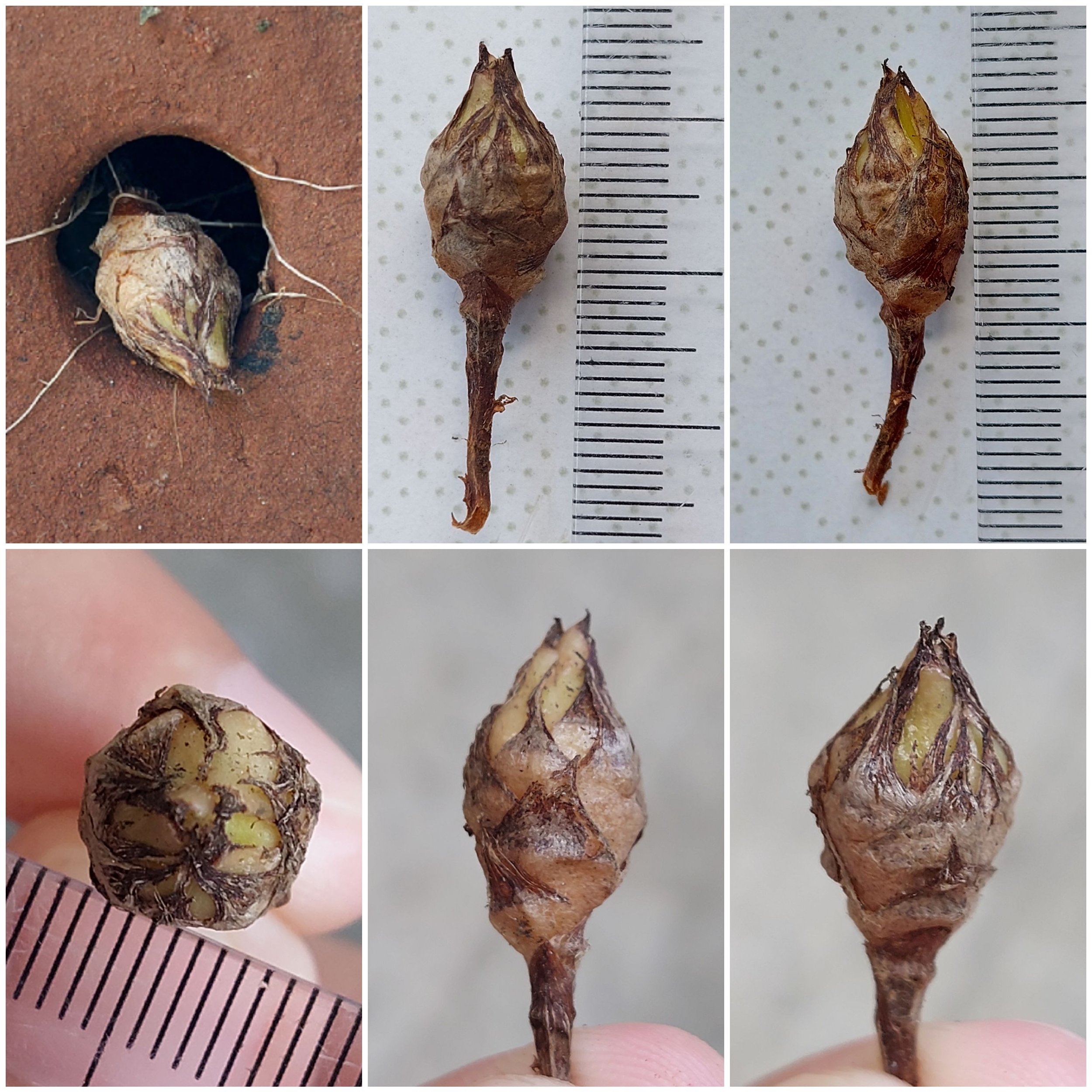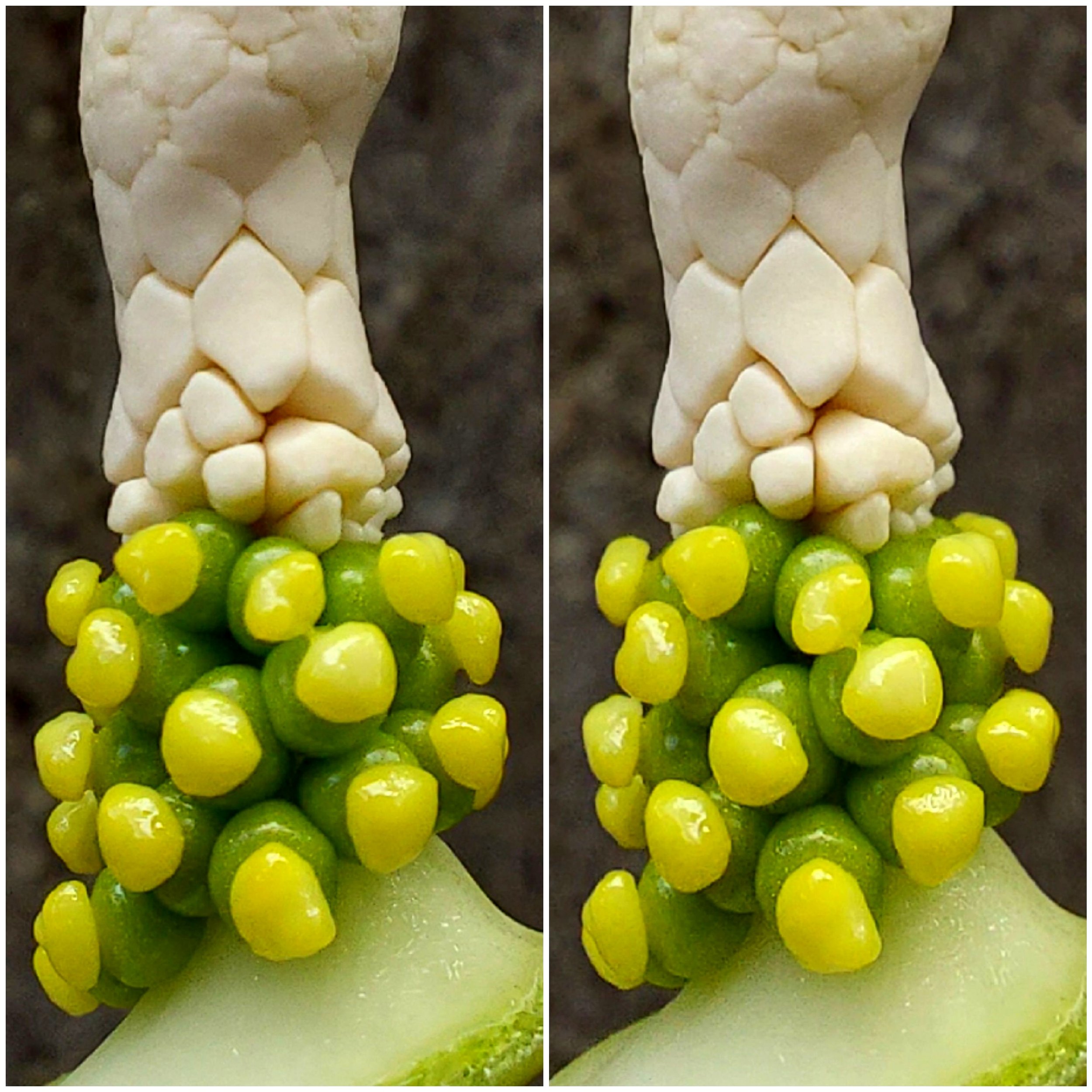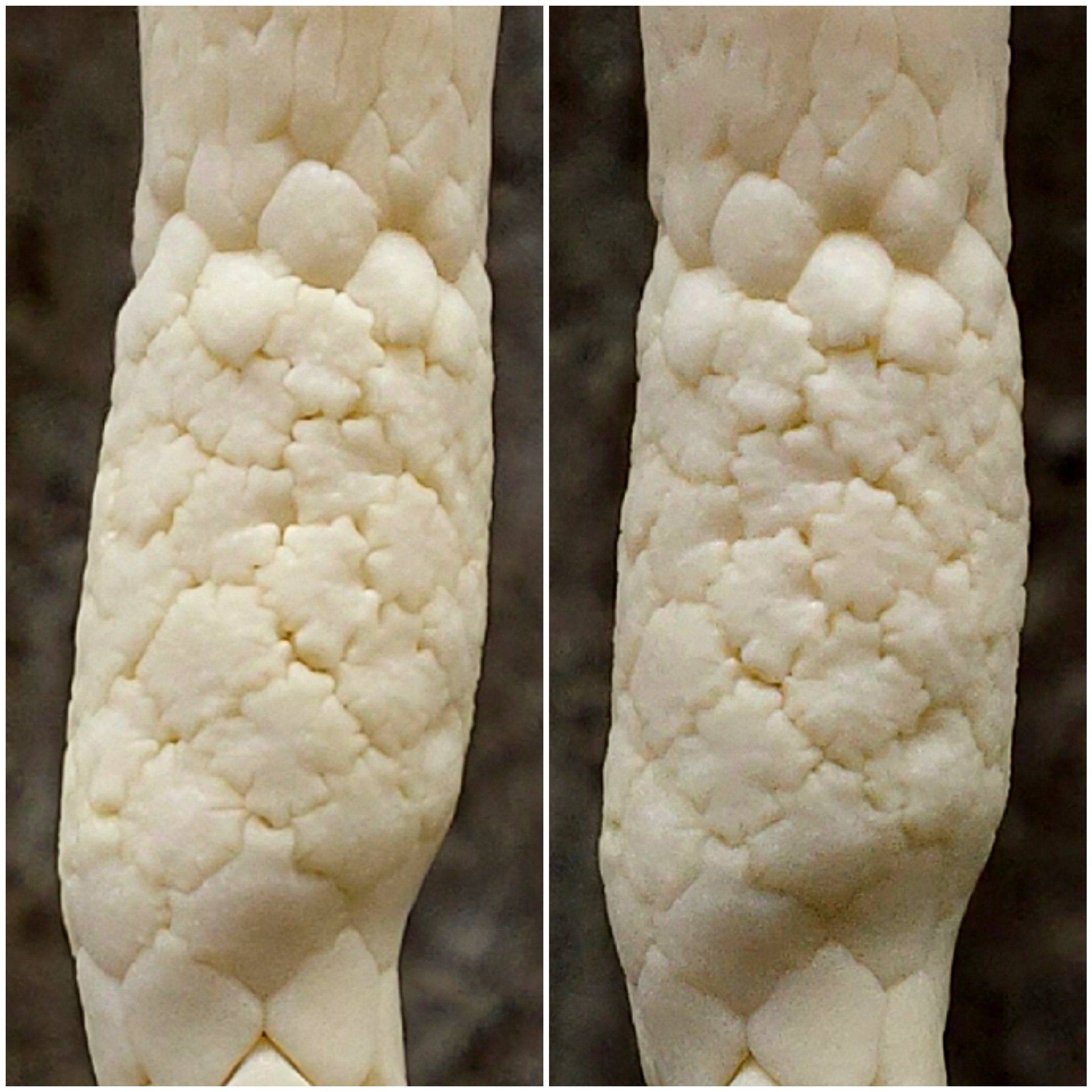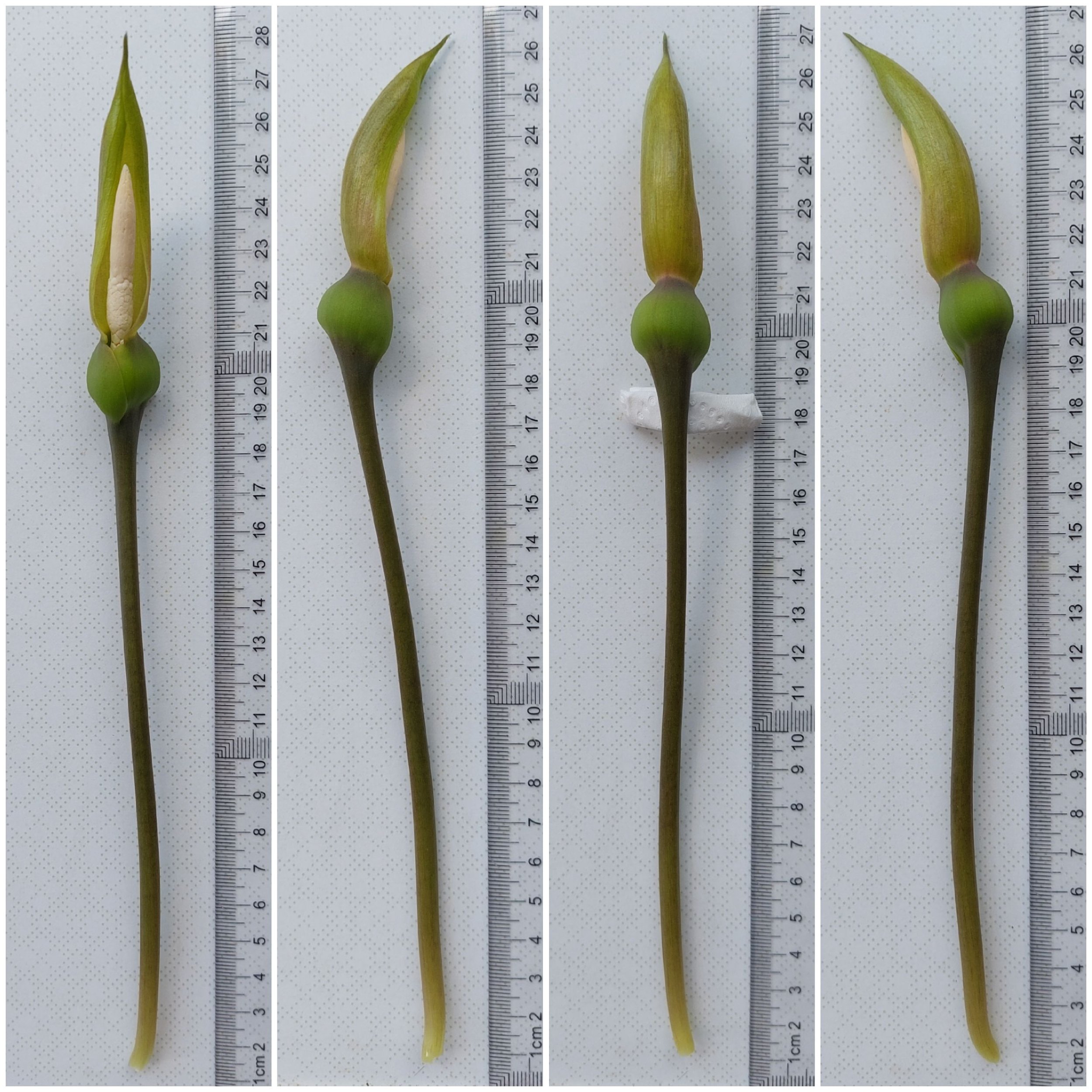ALOCASIA SCALPRUM
ORIGINAL DESCRIPTION:
David Burnett | The Cultivated Alocasia P.99 (1984)
Ab aliis speciebus Alocasiis Philippinarum lamina folii parva tenuiter lanceolata subfalcata, lobis posticis minutis, venis impressis differt.
TYPUS: Cult. Botanischer Garten Miinchen, origin unknown, 1983, /. Bogner 1659 (M, holo). [Alocasia cv. Samar Lance; see Burnett, Aroideana 7 (1984) 99, fig. 38].
SYNONYMS: Alocasia ‘Samar’, Alocasia ‘Samar Lance’, Alocasia ‘Samar Prince’, Alocasia ‘Mythic Pining for You’ (incorrect renaming by Proven Winners)
DISTRIBUTION: Philippines, Samar Island
Map by Charlie Moonshade
CLIMATE: Tropical humid climate
Humidity is moderate throughout the year, ranging from 60% to 70%
Temperature is varies between the seasons - within the range of 48°F/9°C to 88°F/31°C during the day. Minimum temperatures never dip below 45°F/7°C
Rainy and humid season (October to May) and a dry season between June and October. The average annual rainfall is 1,200 mm
ECOLOGY: Unknown
SPECIES DESCRIPTION:
Diminutive to small herb; leaves several together; petiole shorter than the blade, to ca. 10 cm long, sheathing in the lower third, green mottled darker green; blade narrowly lanceolate, slightly falcate, 15-25 cm long x 2-5 cm wide; anterior lobe ca. 14-22 cm long, with the margin entire and slightly revolute (dry); anterior costa with 2-3 primary lateral veins on each side diverging at ca. 45°, like the costae and secondary venation deeply impressed adaxially, prominent abaxially; secondary venation arising from the primary at a low angle and running to margin, not or hardly forming interprimary collective veins; posterior lobes much reduced, forming narrowly triangular auricles 1.5-3 cm long; posterior costae poorly developed, naked in the sinus for ca. 1 cm to almost throughout their length
INFLORESCENCE:
Inflorescence solitary; peduncle subequalling the petioles at anthesis; spathe ca. 6 cm long; lower spathe ca. 1.5 cm long, subcylindric, differentiated from the limb by a weak, gradual constriction; limb lanceolate, green, mucronate for ca. 5 mm; spadix somewhat shorter than the spathe, stipitate for 5 mm, the stipe partly adnate to the spathe; female zone ca. 6 mm long, obliquely inserted on the stipe, narrow, ca. 3 mm thick (dry); ovaries subglobose, ca. 1.2 mm diam.; stigma sessile, discoid, almost as wide as the ovary, weakly 2-3 lobed; sterile interstice ca. 9 mm long, the lowermost synandrodia reduced, thence the interstice ca. 3 mm thick, slightly tapering distally; male zone somewhat thicker than the upper part of the interstice, 4.5 mm diam, 8 mm long; synandria rhombo-hexagonal, strongly wavy-edged, ca. 1.5 mm diam.; appendix 1.6 cm long, tapering; infructescence whitish yellow.
VARIEGATED FORMS: YELLOW
ETYMOLOGY: The specific epithet for this species, comes from the Latin scalprum, which refers to a tool used for scraping, paring, and cutting away, very similar to a modern knife, which the leaf of Alocasia scalprum resembles
NOTES:
This species is apparently quite well-known in cultivation in the Philippines, but is not represented by any wild-collected herbarium material. Burnett (1984) notes that what is considered in the horticultural community to be one species is highly variable and he lists four selected varieties all said to have originated from the island of Samar. The only material I (A. Hay) have seen in flower, which forms the holotype, seems exactly to match the cultivar known as 'Samar Lance'. Although it seems probable that the other forms mentioned and illustrated in Burnett (loc. cit.) are conspecific with Alocasia scalprum
Alocasia sinuata and Alocasia scalprum are sympatric on Samar and Leyte islands, and there are wild collected specimens that show characteristics that are reminiscent of both species.
Where Alocasia 'Samar Lance' is assumed to have come from. Specimens of Alocasia scalprum and Alocasia sinuata in this island can be distinguishable enough. There are however many intermediate forms, like the ones that are both slender (resembling scalprum) and bullate (resembling sinuata).
The overlapping specimens from Samar island seem to have a lot in common with the Alocasia scalprum from the northern part of Mindanao Island - Charlie Moonshade
Like Samar Island, there are forms of Alocasia scalprum and Alocasia sinuata that are easily distinguishable here. However, they also have intermediate forms. The bullate ones are assumed to be Alocasia sinuata, while the less-bullate ones to be Alocasia scalprum - Charlie Moonshade
Specimens from other islands also show high variability in terms of leaf shape and coloration
This is the only photo-documented specimen observed from the island so far. Assumed to be Alocasia scalprum, although it lacks the distinct red coloration of the species on its leaf underside.
The only specimen documented from the island so far
There seems to be a lack of Alocasia sinuata in this region of Mindanao too. As mentioned previously, they seem to resemble the scalprum-sinuata intermediate forms of Samar Island. There are no recorded specimens of extremely slender-leafed Alocasia scalprum like in Samar and Leyte.
Alocasia sinuata as assumed, makes a reappearance. They are less bullate, but still maintainthe shield-like leaf shape. Specimens of Alocasia scalprum on the other hand, are consistently slender in shape, but not as slender as the ones found in Samar & Leyte.
Adaxial sides resemble both Alocasia sinuata and Alocasia scalprum depending on how bullate or many the veinings are. The leaf underside however, shows varying degrees of red coloration. They are all assumed to be Alocasia scalprum, most especially as evidenced in their inflorescence structure.
Other miscellaneous photos of the Alocasia scalprum complex, showing extreme phenotypic diversity
CULTIVARS: N/A
HYBRIDS: Alocasia ‘Dragon Wing’ (A. baginda ‘Dragon Scale’ x A. scalprum), Alocasia Unnamed 2 (A. longiloba x A. scalprum)

